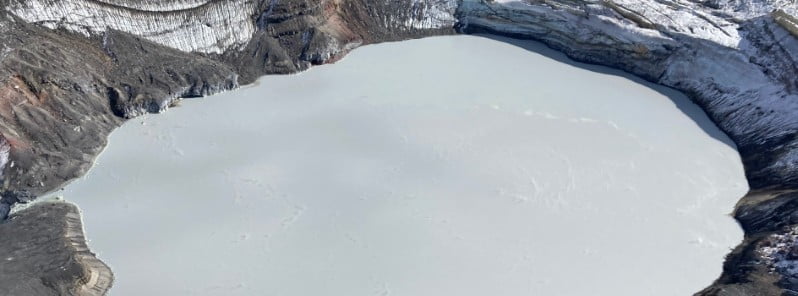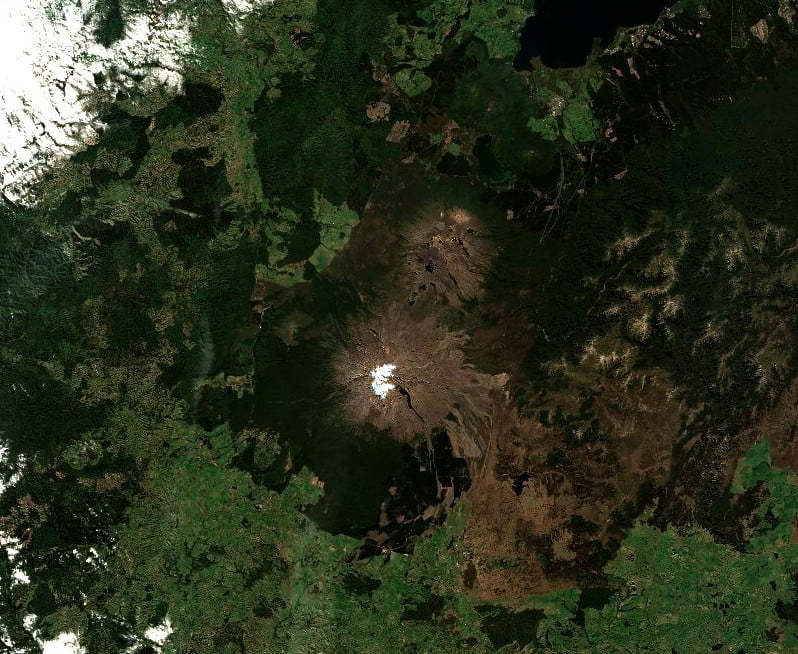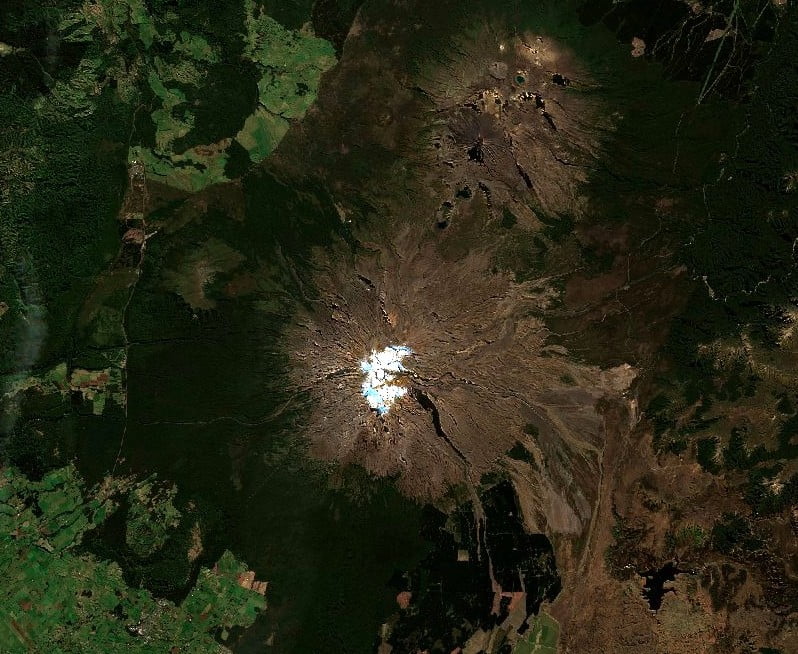High levels of volcanic gas emissions, strong volcanic tremor at Ruapehu, New Zealand

Recent airborne gas measurements over Ruapehu volcano, New Zealand confirm continued high levels of volcanic gas emissions, along with strong volcanic tremor. Meanwhile, Crater Lake (Te Wai ā-moe) temperature has risen to 38 °C (100.4 °F). Within the next four weeks, the most likely outcome of this unrest episode is no eruption, or a minor eruption that is confined to the lake basin. The next most likely scenario is an eruption that impacts the summit plateau and generates lahars in multiple catchments.
Over the past six weeks, the volcano has exhibited the strongest volcanic tremor in two decades along with a rise in Crater Lake (Te Wai ā-moe) temperature and this period of heightened volcanic unrest continues to date, GNS Duty Volcanologist Geoff Kilgour noted.1
Over the last week, the level of volcanic tremor has varied, with bursts of strong tremor interspersed by short, periods of weaker tremor. This represents a change in character in the tremor, and the driving processes remain unclear, Kilgour said.
The last three days have seen Crater Lake temperature rise to 38 °C (100.4 °F) following a four-week period at 36 – 37 °C (96.8 – 98.6 °F) – modeling suggests that to maintain the lake temperature and subtle rise requires ~200-300 MW.
Due to the heightened volcanic unrest, GNS Science staff are carrying out more frequent aerial gas measurements and Crater Lake sampling.
A gas measurement flight on April 28 recorded the sixth-highest sulfur dioxide (SO2) flux of 390 tonnes per day since 2003. SO2 is a strong indicator gas and is derived from a relatively shallow magma body, which is perceived to currently exist a few kilometers beneath Crater Lake. Further gas flights will be conducted when weather conditions are suitable.
“Sampling of Crater Lake was also conducted last week and during that visit, our scientists observed upwelling of Central Vent and reduced upwelling at the Northern vents area. During recent visits, active upwelling has only been observed at the Northern vents. It is important to note that Central Vent is the primary vent, whereas the Northern vents are a subsidiary vent system. We had surmised previously that Central Vent was sealed, blocking the main flow of fluids and gases into Crater Lake, however, this vent now appears to be at least partially open,” Kilgour said.
Laboratory analysis of the latest Crater Lake fluid and gas samples – which will show if magma is interacting with the hydrothermal system beneath the lake – is still not finished.
The SO2 flux, sustained CO2 and continuing strong volcanic tremor, continue to indicate that molten rock (magma) is driving this period of heightened unrest. Increasing Crater Lake temperature is reflecting the increasing upwelling of hot fluids and gases through Central Vent as well as the Northern vents.
Within the next four weeks, the most likely outcome of this unrest episode is no eruption, or a minor eruption that is confined to the lake basin, Kilgour said.
Small eruptions are still able to generate lahars, especially in the Whangaehu River.
The next most likely scenario is an eruption that impacts the summit plateau and generates lahars in multiple catchments, similar to what was seen after the September 2007 eruption or older events like those in 1975 and 1969.
The chance of a prolonged eruptive episode or a larger eruption, such as occurred in 1995-96 with wider ashfall impacts, is higher than it was two months ago, but remains very unlikely. Such an eruption would most likely only follow a sequence of smaller eruptions.
The interpretation of this activity is consistent with elevated volcanic unrest at the heightened level and therefore the Volcanic Alert Level remains at Level 2 and the Aviation Color Code remains at Yellow.


Geological summary
Ruapehu, one of New Zealand’s most active volcanoes, is a complex stratovolcano constructed during at least four cone-building episodes dating back to about 200 000 years ago.
The 110 km3 (26.4 mi3) dominantly andesitic volcanic massif is elongated in a NNE-SSW direction and surrounded by another 100 km3 (24 mi3) ring plain of volcaniclastic debris, including the Murimoto debris-avalanche deposit on the NW flank.
A series of subplinian eruptions took place between about 22 600 and 10 000 years ago, but pyroclastic flows have been infrequent. A single historically active vent, Crater Lake, is located in the broad summit region, but at least five other vents on the summit and flank have been active during the Holocene.
Frequent mild-to-moderate explosive eruptions have occurred in historical time from the Crater Lake vent, and tephra characteristics suggest that the crater lake may have formed as early as 3 000 years ago. Lahars produced by phreatic eruptions from the summit crater lake are a hazard to a ski area on the upper flanks and to lower river valleys.2
References:
1 Volcanic unrest continues at Mt Ruapehu marked by increased volcanic gas output and strong volcanic tremor: Volcanic Alert Level remains at Level 2 – GeoNet – May 2, 2022
2 Ruapehu – Geological summary – GVP
Featured image credit: GeoNet

Commenting rules and guidelines
We value the thoughts and opinions of our readers and welcome healthy discussions on our website. In order to maintain a respectful and positive community, we ask that all commenters follow these rules.